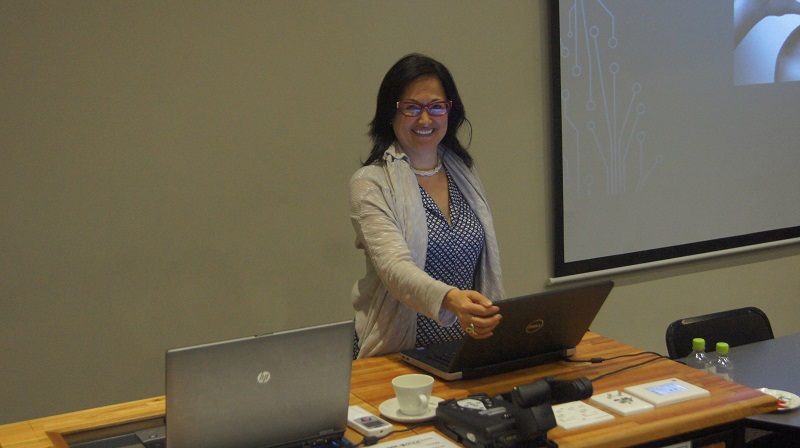Prof Pamela Kato is best-known for her role in creating Re-Mission, a game released in the early 2000s that helped cancer patients realise the importance of taking their medication by showing them what it’s doing inside their bodies.
She is today’s lead speaker at the Serious Games Conference happening in Vanderbijlpark.
Re-Mission proved successful, partly because it was a fun but also because of the meticulous research put into it that demonstrated its effectiveness, and helped it achieve its ultimate goal: of encouraging cancer patients to keep taking the awful medication that treated their cancer. The game’s core principles proved so sound, a study of it was published in the peer-reviewed and highly-respected journal Pediatrics in the US.
Kato is currently the director of the Serious Games Institute at Coventry University in the UK, and has dedicated herself to making serious games even better.
In her time as a serious games designer, Kato has gathered a number of myths and tips about making serious games. Knowing these, she says, will help with the creation process, and should be actioned by everyone involved, whether that’s an NGO with a mission or a developer interested in making games.
Mythbusting
Myth 1: If you want to make a serious game, the first thing to do is to contact a serious game developer. WRONG. It’s your job as the driving force behind this serious game to know what it is you want the game to achieve, how you will know if it has done so, what impact you’d like it to have on the world and have an idea of how you’d like to get there. A developer knows how to make games fun; it’s not their job to know what you know.
Myth 2: Not a gamer? You must be a great game designer. WRONG. This may seem common sense, but it isn’t. Kato says that even gamers, who play tons of games, aren’t necessarily great game designers, and it’s especially true of people who don’t game at all. Basically, even if you’re paying to have a serious game made, don’t assume you’re a great game designer and insist things be done your way – let the professionals do their job.
Myth 3: If you provide information in a game, it will magically change the player’s behaviour. WRONG. How a game plays is even more important than raw knowledge, and one that has engaging mechanics and an element of fun has more chance to change the player’s real-world behaviour than one that simply provides information.
Myth 5: When my game is done, everyone is going to want to buy it! This couldn’t be more wrong. Kato says when you think about making your game, think about how it will be distributed and promoted from the beginning. Even the best game in the world won’t sell if nobody knows about it or it’s difficult to get hold of.
Tips
Kato also provided a number of tips that every game designer/serious games creator should do:
Tip 1: Plan to involve a business person from the start. Think about your market. Don’t do it all yourself. If you need to consult with a psychologist, do it. If you need slick marketing, hire a marketer – doing things you’re not an expert at will have a noticeable – and negative – impact on the final product.
Tip 2: Play the game! Evaluate it. Give constant feedback to the developer so issues can be addressed early.
Tip 5: Actively involve your target group for feedback at every step. Making games for 12 year olds? Talk to 12 year olds about what they want from a game. It may not (and probably will not) be exactly what you were thinking of giving them. Nobody wants to create a game the target group won’t want to play.
Tip 5: As well as playing the game yourself, insist on strict quality and content assurance tests. Don’t leave it up to the developer as they’re motivated to tell you everything is fine when it may not be.
Conclusion
Professor Kato concluded that serious games are a powerful tool that can definitely help affect change in player behaviour when executed properly, but they take also take a lot of hard work by all parties involved in order to be truly successful.

